Abstract Painting
The Dyn painters Wolfgang Paalen, Edward Renouf, Alice Rahon, Gordon Onslow Ford, and Carlos Mérida often brought together imagery from physics, mathematics, geology, or archaeology with motifs from pre-Columbian and Pacific Northwest indigenous objects to create works of visual abstraction.
Wolfgang Paalen and Physics
In his paintings, Wolfgang Paalen sought to merge indigenous Mexican and Pacific Northwest art with visualizations of the world discovered through modern physics. In Paalen's view, this joining of past and present, art and science, was essential to restoring art's centrality to modern life. Though no scientific illustrations appear in Dyn, Paalen's essays refer to Louis de Broglie, Erwin Schrödinger, and other physicists whose work inspired him, and Onslow Ford attested that Paalen was trying to paint the magnificent hidden world physics had revealed.As demonstrated in Pandynamic Figure, Paalen's paintings draw the viewer into the movement of oscillating waves around the canvas, which suggest swirling reflections of light in a pool or in the sky. One experiences the vibrations as a compulsory movement inside the painting.
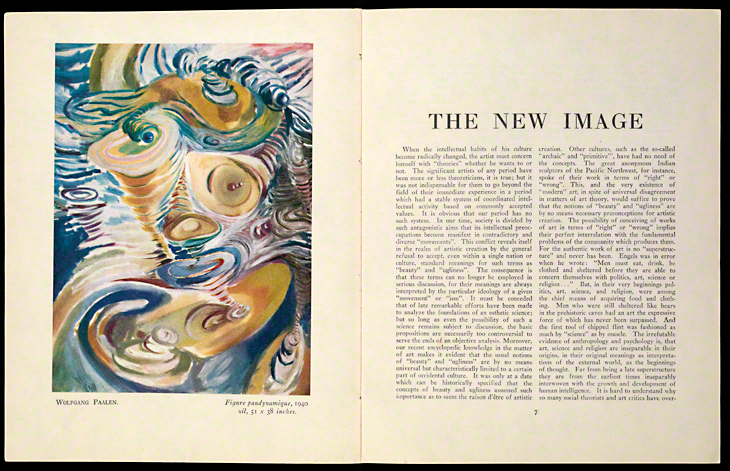
From Artifact to Abstraction
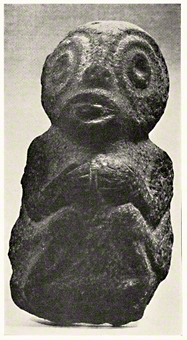
Small stone figure found in the Bay of Bella-Bella, British Columbia. From Dyn, nos. 4–5 (1943), p. 13. The Getty Research Institute, 84-S23. © Succession Paalen, Paalen Archiv, Berlin
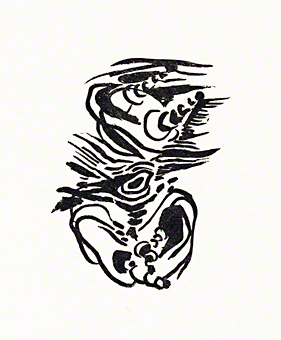
Untitled ink drawing, Wolfgang Paalen (Austrian, 1905–1959). From Dyn, no. 1 (1942), p. 31. The Getty Research Institute, 84-S23. © Succession Paalen, Paalen Archiv, Berlin
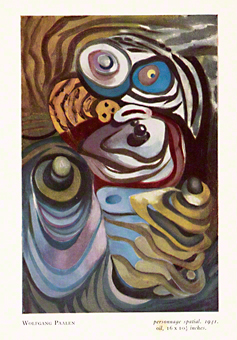
Space Person, 1941, Wolfgang Paalen (Austrian, 1905–1959). From Dyn, no. 3 (1942), after p. 12. The Getty Research Institute, 84-S23. © Succession Paalen, Paalen Archiv, Berlin
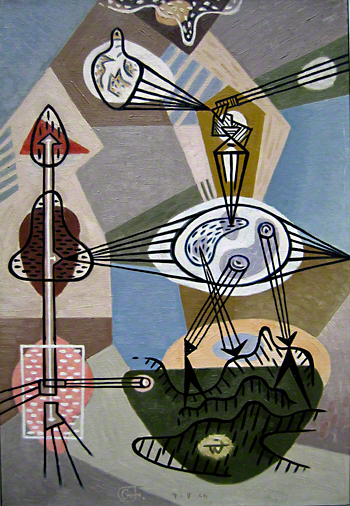
The Marriage, 1944, Gordon Onslow Ford (English, 1912–2003), oil on canvas, framed: 43 x 37 in. Courtesy private collection. © Lucid Art Foundation
Gordon Onslow Ford and Mathematics
Gordon Onslow Ford was interested in the work of mathematician and physicist Henri Poincaré, whose models of multidimensional space resemble the interlocking color panels that form the background of The Marriage. Between land and sky, a scientific experiment is taking place. Maybe it is the splitting of the atom. Energy for the experiment seems to be drawn from both the sun and a decanter, perhaps of water, and it moves into a rocket heading up into the sky where a cloud gathers.Reminiscent of diagrams about condensation and evaporation, The Marriage also recalls the very stylized depictions of nature in pre-Columbian seals. The painting could be a depiction of Albert Einstein's theory of the equivalence of matter and energy as it would have been explained in pre-Columbian times; in that sense, it would be a "marriage" of heaven and earth. This painting, with its striking dynamic energy, thus represents a different way of combining a scientific view with a vision of the ancient world.
Publications
Farewell to Surrealism: The Dyn Circle in Mexico
Annette Leddy and Donna Conwell
Introduction by Dawn Ades
Annette Leddy and Donna Conwell
Introduction by Dawn Ades
Surrealism in Latin America: Vivísimo Muerto
Edited by Dawn Ades, Rita Eder, and Graciela Speranza


